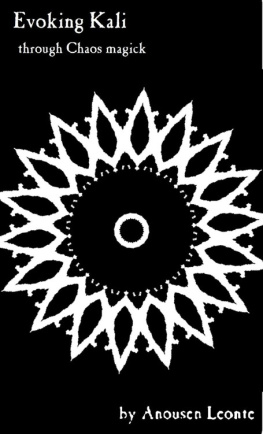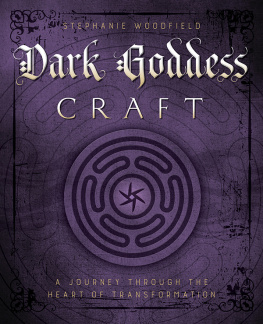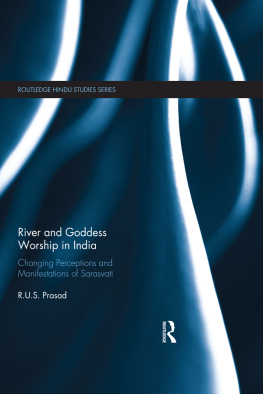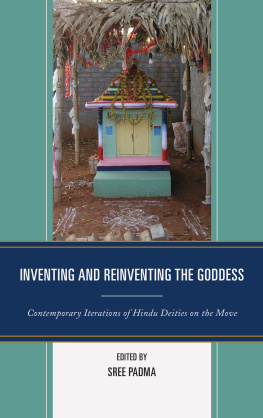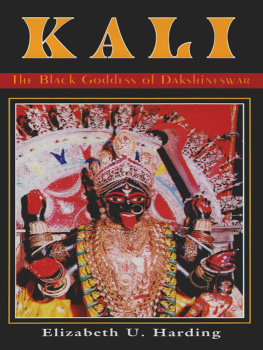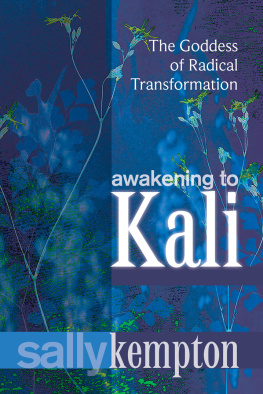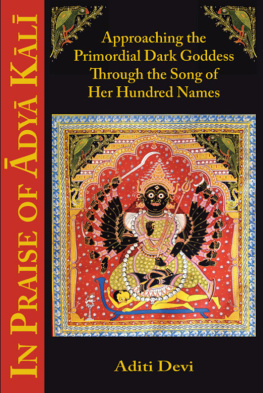O ne of the most unconventional yet immensely popular deities in the Hindu pantheon, goddess Kali essentially represents the dark and contrary aspects of the cosmos. Her naked form and association with violence, blood and gore challenge the very concept of divinity. Yet, over the centuries, she has come to represent a whole gamut of conflicting imagesfrom bloodthirsty ogress to benign goddess. So today while she is venerated as Chamunda, who verges on the macabre and grotesque, she is also adored in household shrines in one of her milder forms, Dakshina-Kali.
It is this evolution of Kalifrom her origin as a tantric goddess to her metamorphosis into a divinity in mainstream religionthat Seema Mohanty captures brilliantly in this book. Drawing upon a variety of sourcestales from the Ramayana, the Mahabharata, the Puranas, the Tantras and Agamas, folklore and filmsshe has succeeded in portraying in engrossing detail the myriad manifestations of the enigmatic deity that is Kali.
Seema Mohanty is a freelance writer based in Mumbai. She has written this book based on the lectures and writings of her brother Dr Devdutt Pattanaik, the well-known mythologist.
The Book of Kali
Book in this series
The Book of Buddha
The Book of Devi
The Book of Durga
The Book of Ganesha
The Book of Hanuman
The Book of Kali
The Book of Krishna
The Book of Muhammad
The Book of Muinuddin Chishti
The Book of Nanak
The Book of Ram
The Book of Shiva
The Book of Vishnu
The Book of
Kali
SEEMA MOHANTY
PENGUIN BOOKS
PENGUIN BOOKS
Published by the Penguin Group
Penguin Books India Pvt Ltd, 11 Community Centre, Panchsheel Park, New Delhi 110 017, India
Penguin Group (USA) Inc., 375 Hudson Street, New York, New York 10014, USA
Penguin Group (Canada), 90 Eglinton Avenue East, Suite 700, Toronto, Ontario, M4P 2Y3, Canada (a division of Pearson Penguin Canada Inc.)
Penguin Books Ltd, 80 Strand, London WC2R 0RL, England
Penguin Ireland, 25 St Stephens Green, Dublin 2, Ireland (a division of Penguin Books Ltd)
Penguin Group (Australia), 250 Camberwell Road, Camberwell, Victoria 3124, Australia (a division of Pearson Australia Group Pty Ltd)
Penguin Group (NZ), 67 Apollo Drive, Rosedale, North Shore 0632, New Zealand (a division of Pearson New Zealand Ltd)
Penguin Group (South Africa) (Pty) Ltd, 24 Sturdee Avenue, Rosebank, Johannesburg 2196, South Africa
Penguin Books Ltd, Registered Offices: 80 Strand, London WC2R 0RL, England
First published in Viking by Penguin Books India 2004
Published in Penguin Books 2009
Text copyright Seema Mohanty 2004
Illustrations copyright Devdutt Pattanaik 2004
Illustrations by Devdutt Pattanaik
All rights reserved
ISBN: 978-01-4306-764-1
This digital edition published in 2011.
e-ISBN: 978-81-8475-150-5
This e-book is sold subject to the condition that it shall not, by way of trade or otherwise, be lent, resold, hired out, or otherwise circulated without the publishers prior written consent in any form of binding or cover other than that in which it is published and without a similar condition including this condition being imposed on the subsequent purchaser and without limiting the rights under copyright reserved above, no part of this publication may be reproduced, stored in or introduced into a retrieval system, or transmitted in any form or by any means (electronic, mechanical, photocopying, recording or otherwise), without the prior written permission of both the copyright owner and the above-mentioned publisher of this e-book.
To my family
who have always been there
Introduction

H er outstretched tongue distinguishes her from all other goddesses in the Hindu pantheon. Her nakedness, unbound hair, association with blood and gore, and unbridled sexuality challenge conventional ideas of divinity. So much so that to the uninformed eye Kali appears less as a manifestation of the divine, and more as a bloodthirsty ogressa patron of thugs and sorcerers.
In the quest to understand Kali it is essential to appreciate the Hindu concept of the divine. Hindus visualize the divine in various formshuman, animal, plant and mineral. Each form, with its respective narrative and rituals, serves as a gateway to realizing the ultimate unmanifest godhead. Worshippers of Shiva and Vishnu, the two most popular male manifestations of the divine, believe that the male form of the divine represents spiritual reality, while the female form symbolizes material reality. Goddess worshippers, however, associate both material and spiritual realities with the female form. To them, Kali is both Goddess or Devi (the female divinity, the supreme manifestation of the divine) and goddess (one of the several incarnations of Devi). As Goddess, Kali embodies both spiritual and material realities, the totality of nature, as she creates, sustains and destroys the world. As goddess, she represents only that aspect of material reality which is wild and untamed, and complements Gauri, the radiant and gentle goddess who represents the domesticated and tamed manifestation of nature.
Worship of the Goddess in India is as ancient as civilization itself, and has its roots in the belief that the earth is a living being that nourishes all animate objects. The most widely accepted theory states that when the nomadic cattle-herding Aryans were assimilated into the settled agricultural communities of the Indian subcontinent almost 4000 years ago, the male-dominated, sky-gazing Vedic deities mingled and merged with the local female-dominated, earthbound, Dravidian (some may say pre-Aryan tantrik) divinities. From this fusion rose the goddesses of India who populate not just the Hindu pantheon but also Jain and Buddhist mythologies.
It is difficult to trace the history of Kali worship in India. Even before the name Kali was first documented in scriptures, there were references to goddesses (and demonesses) that allude to Kali. For example, in the Rig Samhita there is Nirriti, a dark goddess associated with death, who was feared and needed to be appeased. In the Jaiminya Brahmana, there is a verse celebrating the triumph of Indra over Dirgha-jihvi, a long-tongued and lascivious ogress, who thirsted for the divine drink Soma.
It is also difficult to trace the extent of Kali worship in India. In villages across India, goddesses are classified as hot and cold. Hot goddesses are wild and angry, threatening communities with drought and epidemic unless appeased by blood sacrifice. Cold goddesses are gentle and domestic, who nurture communities with love and tenderness. Hot goddesses like Bhagavati of Kerala and Yellamma of Karnataka are sometimes referred to as Kali but do not have the characteristic outstretched tongue. At the same time there are goddesses such as Korravai, the naked Tamil goddess of war, and Chamunda, the emaciated goddess of crematoriums, who share Kalis association with blood sacrifices, death and exorcism but do not share her name.


